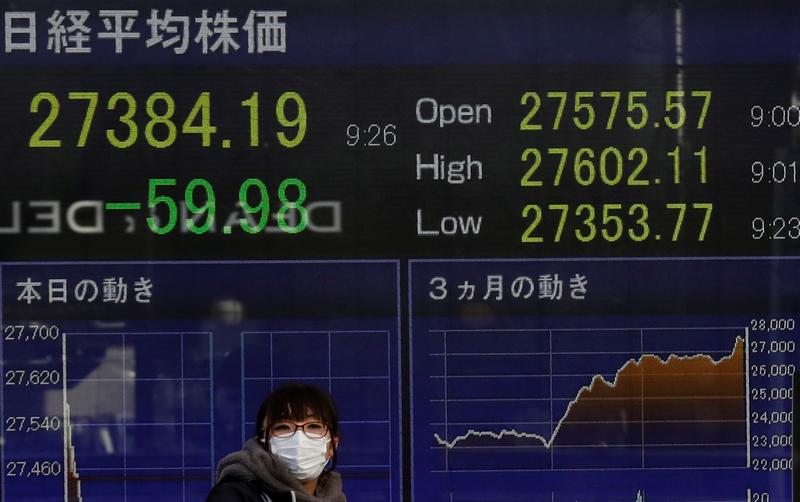SYDNEY (Reuters) – Asian markets were leaning toward a Democratic win in crucial Senate contests on Wednesday as Treasury yields hit 10-month highs on expectations of more debt-funded spending on COVID-stimulus, infrastructure and renewable energy.
Analysts generally assume this would be positive for economic growth globally and thus for most risk assets, but negative for bonds and the dollar as the U.S. budget and trade deficits swell even further.
The head-to-head runoff elections in Georgia for the state’s two Senate seats became necessary when no candidate in either race exceeded 50% of the vote in November elections.
Early voting results were still nail-bitingly close and Democrats need to win both contests to take control of the Senate, while just one win would see Republicans remain in charge and likely lead to legislative deadlock.
Democratic control of the Senate would give more scope for President-elect Joe Biden to act on his ambitious agenda, which includes new stimulus and infrastructure spending.
It might also include higher corporate taxes and tighter regulations, policies not typically favoured by Wall Street.
That in turn could increase regulatory risks for banks, healthcare, big-tech and fossil fuel companies, while crimping after tax earnings and EPS valuations.
The risk was enough to see Nasdaq futures slip 1.1% in Asia, while S&P 500 futures lost 0.5%.
Yields on 10-year Treasury notes rose to 0.99%, the highest since the market mayhem of mid-March and just a whisker from the psychological 1.0% bulwark.
“The market is having to contemplate potentially much higher bond yields from the deficit implications of Biden budgetary arithmetic, assuming he proved able to implement his plans,” added Ray Attrill, head of FX strategy at NAB.
“That said, a decent case is made for risk markets being enamoured at the prospects of stronger fiscal support in 2021, putting aside for now – but not indefinitely – concerns about higher taxes and regulation.”
Analysts assume a much-needed splurge on infrastructure would be positive for economic growth, jobs and sectors such as construction and transport.
Yet it would have to be funded by more borrowing, a negative for the dollar which is already creaking under the burden of ballooning budget and trade deficits.
“The U.S. basic balance of payments – the current account plus long‑term investment flows – is the most negative in over a decade, suggesting there is no underlying demand for dollars,” said Elias Haddad, a senior currency strategist at CBA.
Source: Read Full Article
